Contradictory LaGG-3
In 1940, to replace the I-15 and I-16, which, as the last battles in Spain showed, no longer met the requirements of the time, new fighters were designed and built at an accelerated pace: the MiG-3, Yak-1 and LaGG-3. Moreover, the creators of the latter, engineers S. Lavochkin, M. Gudkov and V. Gorbunov, immediately took a new and very advantageous technological position for that time - to create an aircraft of predominantly wooden construction.
At that time, a kind of "know-how" was wooden "composites" such as kaplurite, balinite, bakelite - types of plasticized wood, which had high strength. Their introduction into production promised great savings in steel pipes and expensive duralumin parts, of which, by the way, the Yak and MiG cores were made.
Delta wood at the time was certainly a progressive material. Its technology was developed by the chief engineer of the plant of screws and skis L. Ryzhkov. By the way, he even organized a small design team of enthusiastic engineers to build a “purely wooden” fighter, the I-22. These developments have benefited from the creation of the fighter, which received the designation And-301.
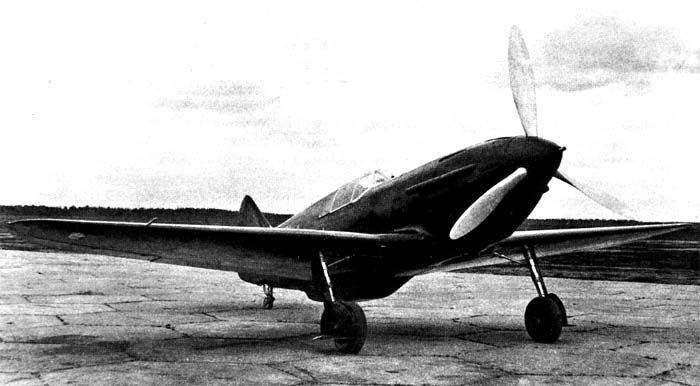
In just one year, by the winter of 1940, an experimental I-301 was already produced, which received the code LaGG-1. On March 30, pilot A. Nikashin made his first flight in a magnificent dark cherry car, polished to a mirror finish (no wonder it was given the nickname "Royal"). The new aircraft successfully passed all the tests, and Gorbunov, Gudkov, Lavochkin were officially assigned OKB-301, appointing the latter as a responsible designer.
The top leadership of the USSR Air Force for the LaGG-1 fighter with the M-105P engine with a power of 1050 hp. set the characteristics: maximum horizontal flight speed - 650 km / h, maximum range - 600 km. With additional hanging tanks not less than 1000 km, flight altitude - up to 12000 m, armament - 23 mm rapid-fire cannon, two ShKAS machine guns and large-caliber BS, as well as the possibility of hanging eight RS-82 rockets.
Such was the tradition then: the military asked for as much as possible, knowing that the production workers would, as always, give a little less. And so it happened. At the state tests, the LaGG-1 squeezed out only 605 km / h at an altitude, and the designers realized that the M-105P was rather weak for their aircraft. The practical ceiling turned out to be somewhat underestimated - 9600 m, and the landing speed was slightly overestimated - 140 km / h. In addition, dive flights, mid-air shooting, aerobatics and spins were not performed. But the LaGG-1 was still of undoubted interest to the Air Force in terms of the new delta wood building material, weapon power and other qualities. The next resolution of the Defense Committee ordered to continue work on the LaGG-1, for which it was supposed to build 25-30 aircraft for comprehensive military tests in the shortest possible time.
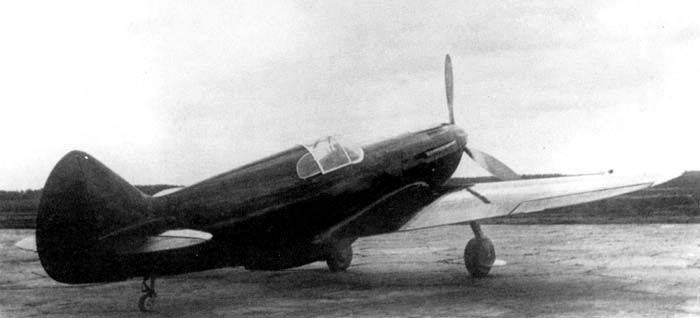
According to the conclusion of test pilots P. Stefanovsky and S. Suprun, LaGG-1 was distinguished by its clean and elegant aerodynamic forms. But there was some lack of engine power. The visibility from the cab is good, except for the rear hemisphere. The cabin is spacious, but there is not enough ventilation. Maneuverability in flight is satisfactory, but the loads on the ailerons and elevators are somewhat high. In terms of piloting technique, the aircraft is obedient and simple. Vibration at high speeds was not observed.
At the same time, the LaGG-3 test pilots had comments on the design of the LaGG-1 during state tests. When landing, the lower guards of the wheels were clogged with grass. A bad tail wheel stopper did not provide stability on the run, the rubber tire had to be replaced with a balloon. In the cockpit, the cranes for cleaning and releasing the flaps and landing gear were inconveniently located, the pilot could confuse them. There was no trimmer on the aileron, and this created difficulties for balancing the aircraft. The axial compensation of the elevator and ailerons is insufficient. The engine hood locks are inconvenient for work: it took 20-30 minutes to uncap the engine. To open the necks of gas tanks and water systems, several types of keys were required, which complicated the work of technicians. Installing the battery is inconvenient and took a long time - up to 15 minutes.
After the completion of state tests, the commission stated that the flight data of LaGG-1 is not lower than that of all modern domestic aircraft with M-105 engines. "LaGG" is distinguished by powerful weapons. The all-wood construction gives room for production and technology. On serial machines in the future it is necessary to improve the longitudinal dynamic stability by creating a more forward centering, up to 22%. The flight weight of the aircraft is clearly large and should be somewhat reduced.
When finalizing the LaGG-1, the commission proposed to bring all small arms, improve the power plant and eliminate all defects. Thoroughly test the aircraft for spins, steep dives and aerobatics. After that, the car must be again transferred to the Air Force Research Institute for control tests. On the plane, it is desirable to install a TK-2 turbocharger on the M-105P engine or a more powerful AM-37 engine.
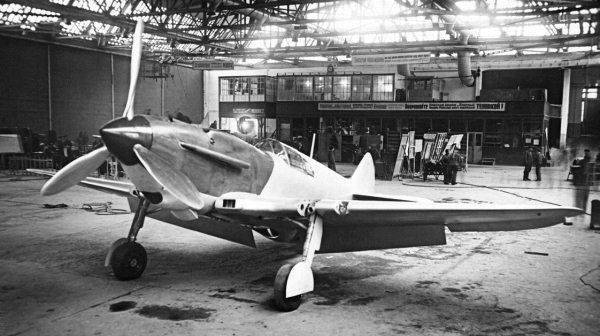
By the fall of 1940, the LaGGa design triumvirate fell apart. Lavochkin from Moscow went to the head plant in Gorky, Gudkov led a group of designers in Moscow, Gorbunova seconded to Tbilisi.
The design of the aircraft was wooden, mainly made of pine, birch plywood and veneer. Delta-wood was used in the ribs and individual power elements of the front part of the fuselage, as well as in the flanks of the wing spar. Armament LaGG-1 consisted of a 23-speed gun Taubin mm, passing through the axis of the gearbox aircraft engine and two synchronous machine guns BS and ShKAS.
On tests in June 1940, the aircraft showed good results. But we must remember that it was lightened and polished to a mirror finish. It lacked a TK-2 turbocharger, bomb racks and electric droppers, a radio station, and armor protection on the pilot's seat. After the fuel supply was increased on the second LaGG-1, it was put into large-scale production simultaneously at several aircraft factories under the name LaGG-3. Additional tests for aerobatics, dives and spins of the aircraft were again carried out by pilot Nikashin. Unfortunately, in the future, in 1943, he died while testing the Gu-1 aircraft, Gudkov's design, made according to a scheme similar to the American Aerocobra.
A lot of trouble brought to the tests and LaGG-3. Pilot A. Kubyshkin made a flight with retractable skis, one of which tore off the rack from the air and hit the stabilizer. The elevator was damaged, and the uncontrolled aircraft entered a steep dive. With incredible efforts, Kubyshkin managed to jump out of the cabin and escape by parachute.
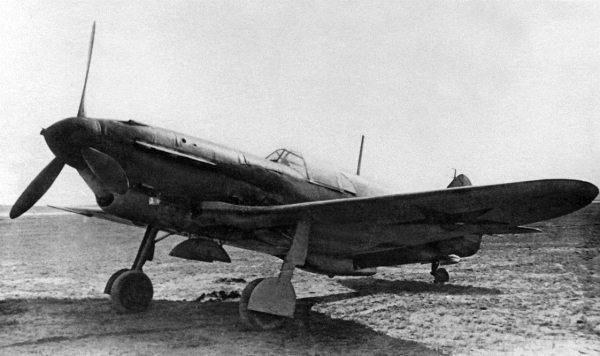
On the eve of the war, in May 1941, Stalin held a regular meeting with representatives of the high command aviation and the leadership of the aviation industry, at which the head of the Air Force Research Institute A. Filin reported on the progress of testing new fighters and bombers. He spoke rather harshly about the flaws in the work of the aviation industry. He also said that Pe-2, Yer-2, Su-2 combat aircraft, as well as new Yak-1 and LaGG-3 fighters, were presented for state tests that had not been completed and had not completed factory tests. Moreover, the latter was of particular concern: with its most powerful weapons, it urgently needed to increase engine power. LaGG-3, like the Yak-1, was desperately needed by our Air Force. History fully confirmed this: until the summer of 1944, the Soviet aircraft factories built the 6528 LaGGov.
The mass production of the new front-line fighter began in 1941. Its weight after re-equipment increased by 70 kg. This is where trouble awaited: during mass production, the aircraft lost the gloss that distinguished the "Royal" - a prototype, and the flight performance of the machine, of course, deteriorated somewhat. The speed dropped to 550 km/h, the rate of climb and range decreased.
Before mass production, the Defense Committee put forward another requirement: to increase the range to 1000 km instead of the planned 600 km. Additional tanks were placed in the wing consoles. The control flight Moscow-Kursk-Moscow was performed on the new machine, after which the aircraft received the name LaGG-3. The serial LaGG-3 had excellent weapons. In addition to the ShVAK and VYa-23 cannons, in 1942-1943 they produced versions with the Shpitalny Sh-37 and Nudelman NS-37 cannons. That is why in battles LaGG-3 was often used on attack.
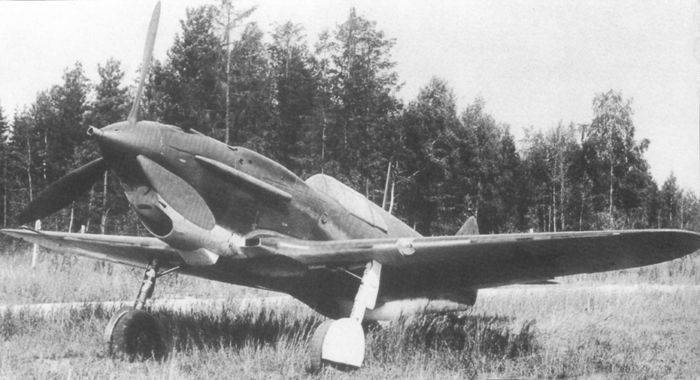
In the course of operation at field airfields, some serious shortcomings of the aircraft appeared: airflow suction of the landing flaps, an extremely limited view of the rear hemisphere, a tendency to stall when flying at low speeds. The LaGG-3 fighter was significantly inferior to the Yak-1 in terms of weight return and compact design. The design of the LaGG-3 with the same engine and almost equal armament was almost 300 kg heavier. The reason for this was primarily the wooden fuselage structure compared to the truss structure on the Yak-1. There was also a difference in weight between the wings: the LaGG's wing had console attachment points, while the Yak's wing was one-piece. But in terms of survivability, the LaGG, and even more so its successors, were unsurpassed.
Subsequently, starting from 1942, the LaGGov model modified each of the three designers of the former triumvirate independently. A brief analysis of the improvements LaGG-3, of course, interesting and instructive.
The Gorbunov group owns five different modifications. The "lightweight" LaGG-3 was built with an uprated VK-105PF engine. Due to the absence of part of the armament and equipment, weight reduction was achieved. In 1942, several copies were built. Aircraft "105" - a lightweight version with a VK-105PF2 engine. The first copy was made in the spring of 1943, and the Understudy passed state tests in the spring of 1944, but the armament and power plant were not brought to it. The LaGG-3 with the VK-107 engine was created in 1943, it was obviously unsuccessful, since all flights ended in an emergency landing due to the unstable operation of the engine. LaG-5 with ASh-82 engine. This design has become a kind of approach to "La-fifth". The tests took place in 1942, but the aircraft did not go into production due to many shortcomings. And finally, the LaGG-3 66th series - modernized according to the recommendations issued by TsAGI and the Air Force Research Institute. It was the last serial "LaGG", which was in production from the spring of 1943 to the summer of 1944.
Under the leadership of Gudkov, two modifications were made. Gu-82 - with the ASh-82 engine. The propulsion system here was borrowed without changes from the Su-2 bomber. Back in March 1941, the first copy was made. They did not manage to build the second one - the evacuation of the plant prevented. The last one is the K-37, with the cannon of the Shpitalny Sh-37. Built three copies. By the winter of 1941, this fighter had successfully completed military tests at the front, and was put into production in a small series.
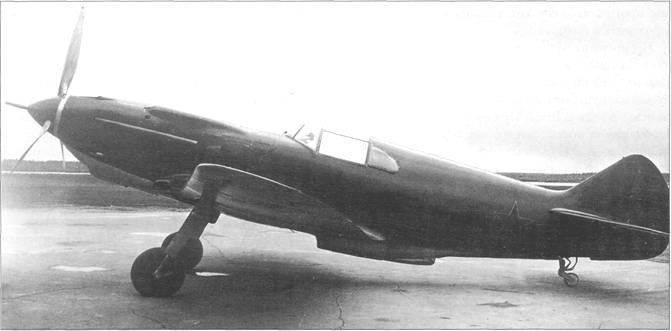
Significantly modernized LaGG a group of engineers led by Lavochkin. This is LaGG-3 with a 23 mm MP-6 cannon designed by Taubin. His tests passed in early 1941. Next - LaGG-3 "fighter tanks", the modification on which the 37-mm Sh-37 cannon was installed. In the winter of 1942, the first production series of these aircraft passed military tests. A group of fighters sent to the troops in combat sorties destroyed more than fifty enemy combat aircraft and 5 tanks. However, the Sh -37 wasn’t properly worked out and often refused.
It should be noted that all the huge work on modifications LaGG-3, as we see, was not worth the money spent on it. Except for a single case, the development of a variant for the M-82 engine.
Here is a curious testimony of the old test pilot, Hero of the Soviet Union I. Fedorov, who served in 1941 at an aircraft factory in Gorky, where LaGG-3 was produced: “In July, Deputy Commissar of the Aviation Industry P. Dementyev arrived at our plant. He checked all the technical documentation for the aircraft LaGG-3 on a very sad occasion.It turned out that with three chief designers, the production of LaGG-3 was mastered by factories near Moscow, Gorky, Novosibirsk, Leningrad and Taganrog.At the same time, the drawings and technological maps of various options were often confused, and many details turned out to be unsuitable for assembly. There was also a marriage. In a word, the LaGG-3 turned out to be a kind of "dark horse" for the Air Force. The aircraft were stamped in large numbers, and the flight performance deteriorated. I don’t remember any of the combat pilots praising the LaGG. Figuratively speaking , it is valuable only as fertilizer, on which the unsurpassed La-5 fighter subsequently grew up. Well, Fedorov has the right to his personal opinion on this matter.
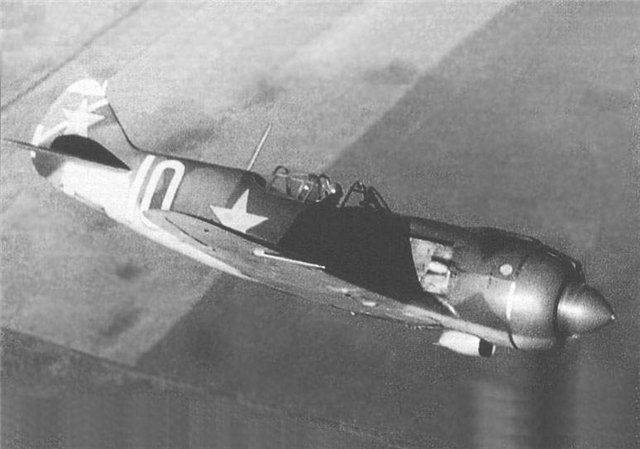
So, in March 1942, pilot Nikashin made the first flight on the LaGG-3 with an air-cooled M-82 engine - the prototype of the later famous La-5 fighter. Its design, compared with its predecessor, has changed slightly, mainly affecting the propulsion system and the front of the fuselage. Scarce delta wood was gradually replaced with Scotch pine, and in 1944 metal wing spars were introduced. The fuselage design was changed slightly. The armament consisted of two 20 mm ShVAK synchronous cannons.
The first La-5 was built at the end of 1941. Then carried out improvements and factory tests. In May 1942, joint tests of the LII and the Air Force Research Institute took place. La-5 was immediately launched into large-scale production, and the takeoff power of the M-82 engine was increased to 1700 hp. At an altitude of 6000 m, the speed of the aircraft reached 600 km / h. And soon the La-5FN appeared - an even more powerful fighter, which has already significantly surpassed the German Bf.109 and Fw-190. But that's actually another topic...
Be that as it may, LaGG-3 is an honored air veteran soldier. Armed squadrons fought with the superior Luftwaffe forces in the skies over the Crimea, the North Caucasus, Leningrad, the Moscow region and Stalingrad. You can talk about the combat advantages and disadvantages of the LaGG-3 for a long time, and you cannot tell about it in one article. Therefore, here are just a few facts.
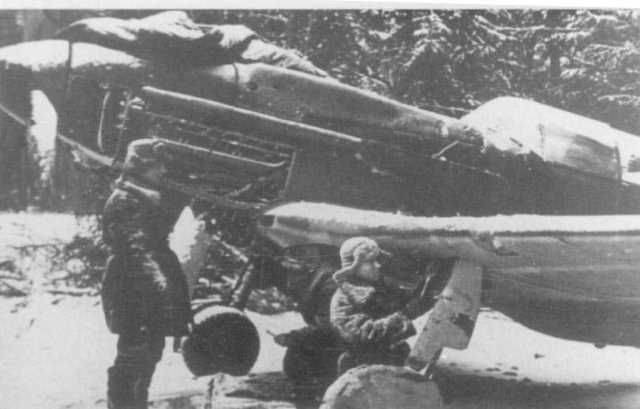
The first known victory on the LAGG-3 in an air battle was won on July 13, 1941, and belongs to Senior Lieutenant A.V. Bondarenko, who destroyed the Nazi bomber Do-17 near the city of Dorogobuzh. This fight was LaGG's first baptism of fire. In the future, the LaGG-3 proved to be most effective in air defense units when repulsing the fascist attack on Moscow in 1941, as well as in the air defense of valuable strategic objects. Both high survivability and powerful weapons were useful in the fight against bombers, but speed characteristics were no longer so critical.
But even in air battles with enemy fighters in capable hands, LaGG also demonstrated its qualities very effectively. The famous Soviet ace G.D. Kostylev successfully fought from 1941 to 1943 on this machine against the Germans and Finns, bringing his combat score to almost 30 enemy aircraft during this time. Fighting on the LaGG-3, he earned the title of Hero of the Soviet Union and P.M. Kamozin.
The options armed with a 37-mm cannon turned out to be effective. At the beginning of the Great Patriotic War, three cannon LaGGs arrived near Vyazma. During one of the sorties, Senior Lieutenant Pereskokov shot down two Me-110s, having used up only 12 shells. The LaGG-3 ended the war in 1945 in the Far East, where it was used during combat operations against Japan as an air defense fighter to provide cover for stationary objects.
By the way, the often recalled insulting nickname “The Lacquered Guaranteed Coffin”, contrary to almost universally accepted opinion, was not used at all during the war years. It appeared at a later time - after the publication of a book dedicated to the works of S. A. Lavochkin.
About this plane, experienced aviators say anything: strange, ambiguous ... But there is also the opinion of an old experienced aviation engineer: “La Fifth” is certainly our best mid-war fighter. He could have appeared much earlier, start Lavochkin immediately to make LaGG-3 with an air-cooled motor. Yes, it is clear, not destiny. ”
Sources:
Ivanov S. LaGG-3 // War in the air. No.68. C. 3-7.
Bakursky V. LaGG-3 Fighter - 75 years // Aviation and Cosmonautics. 2015. No.3. C. 2-4.
Kudrin N. LaGG-3 - “Dark Horse” // Wings of the Motherland. 1999. No.5. C. 1-4.
Yakubovich N. Unknown Lavochkin. M .: Yauza, Eksmo, 2012. C. 16-17, 26-28, 33-36.
Yakubovich N. Planes Lavochkin. M .: RUSAVIA, 2002. C. 18-19, 35-37.
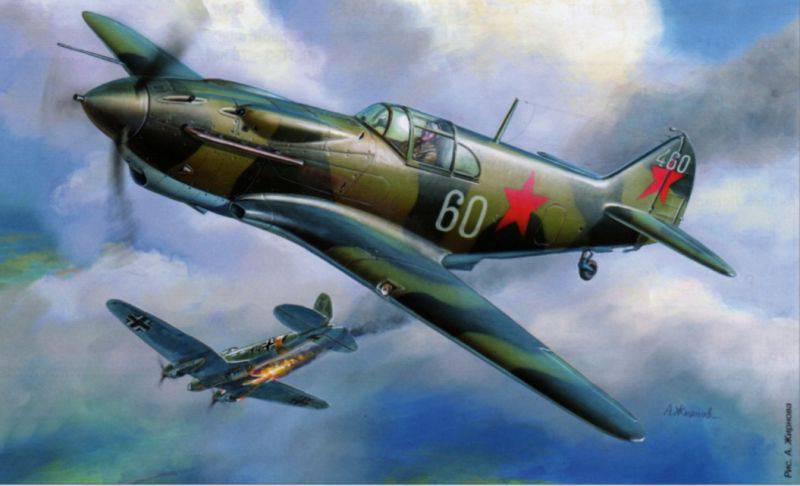
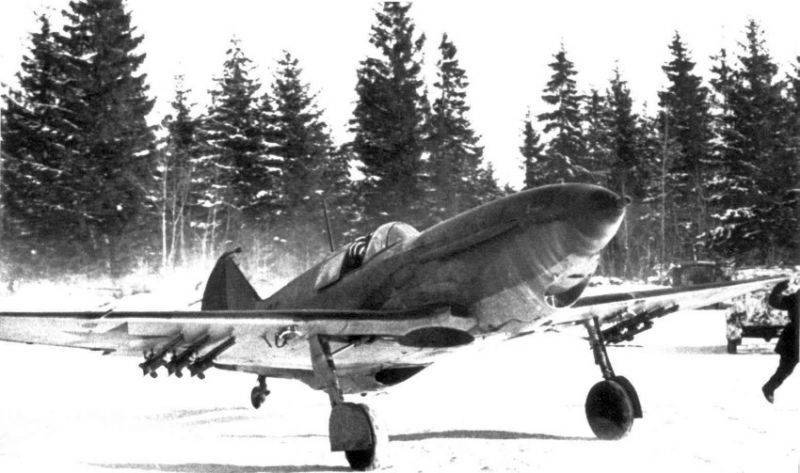
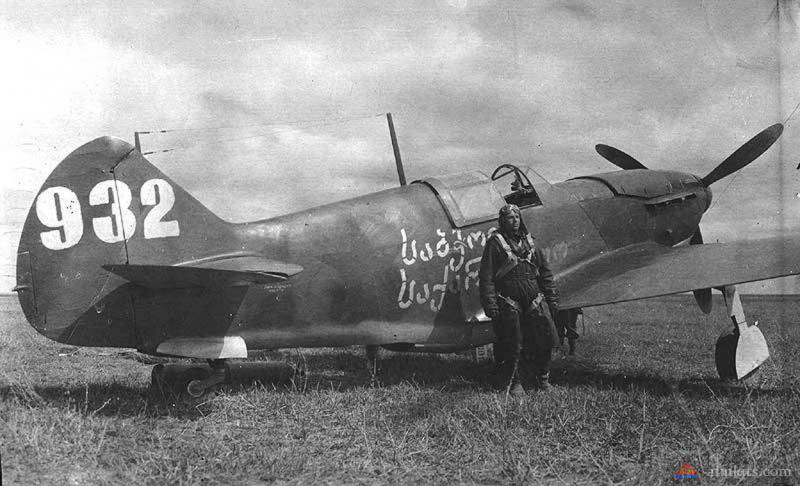
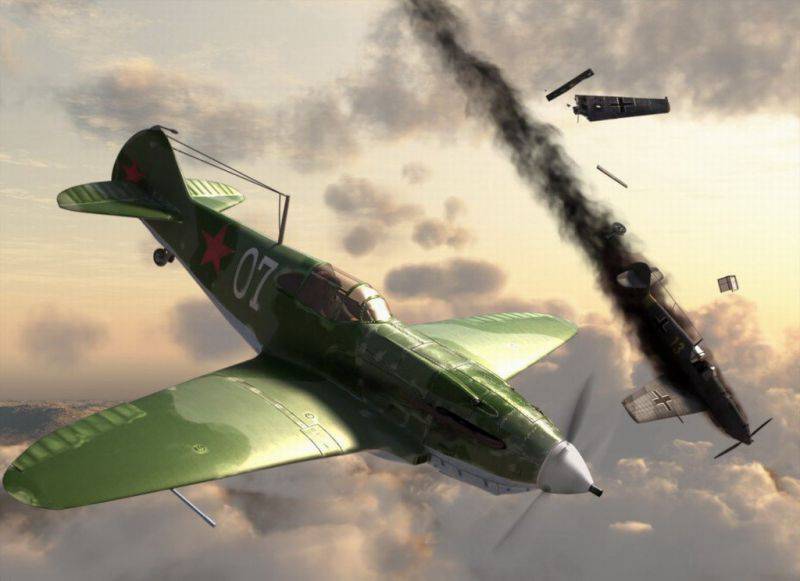
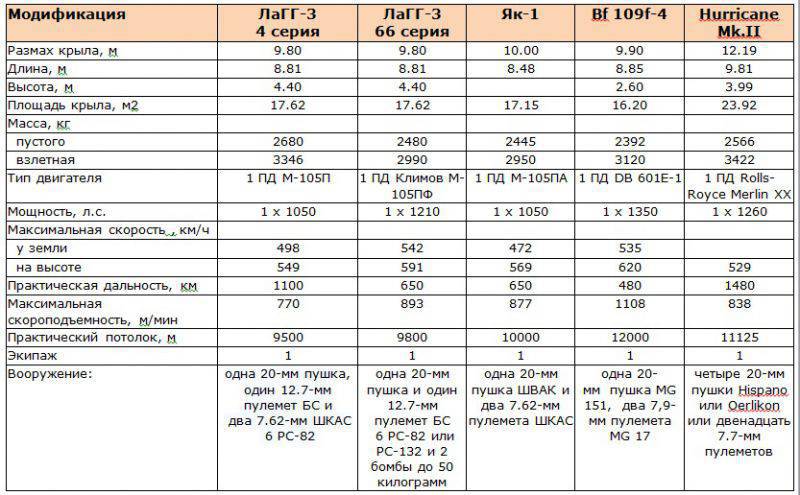
Information